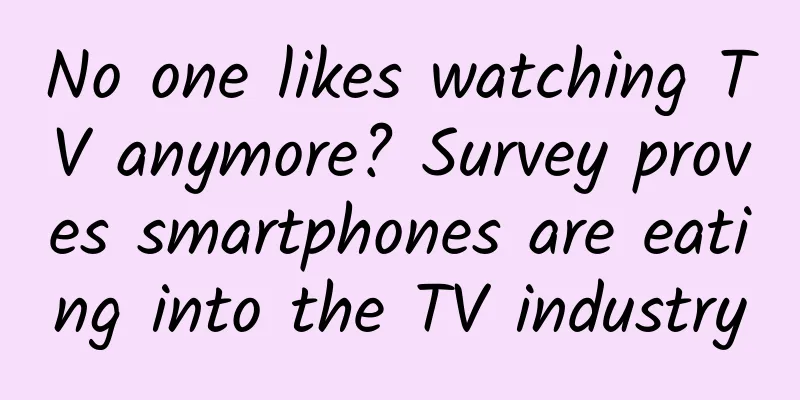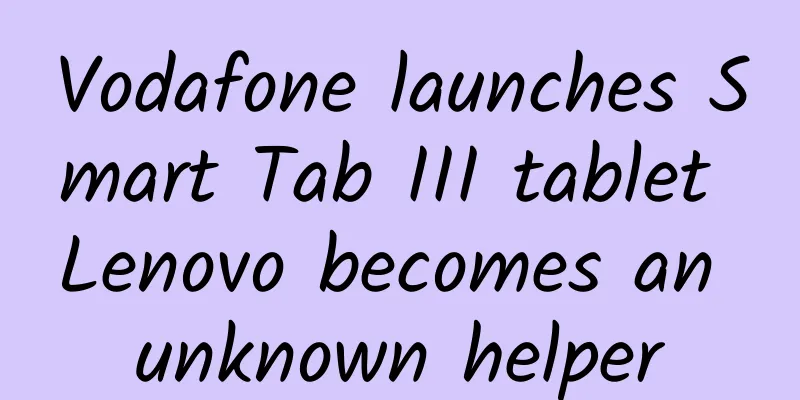My practical experience in Android development

|
I have always wanted to write an article summarizing my experience in Android development. I guess I was not at a certain level at that time, so I couldn't keep up with my thoughts and couldn't write well. Recently, my thoughts became clearer, so I picked up the keyboard again and started typing. Let me make it clear that I am not a programmer from a big company. Before I graduated last year, I have been working in my current entrepreneurial team and doing the coding business that I love. The following summary is based on my current technical level and cognition. If you have different opinions, please leave a comment and communicate with each other. 1. Understand abstraction and encapsulate changesCurrently, most of the development on the Android platform is done in Java. When dealing with an object-oriented language like Java, it is inevitable to touch upon the concepts of abstraction and encapsulation . Some of the developers I have come into contact with still stay at the stage of writing an abstract class, interface, or a method (or abstract method) for these concepts. As for why, I am not sure whether they cannot express it or do not understand it. I will not talk about it in detail below, but directly give examples to explain what I understand as abstraction. //Two ways to pass data between Activities using Intent The following are pseudo-codes, please ignore some details
//Writing method 1
//SrcActivity passes data to DestActivity
Intent intent = new Intent( this ,DestActivity.class);
intent.putExtra( "param" , "clock" );
SrcActivity.startActivity(intent);
//DestActivity gets the data passed by SrcActivity
String param = getIntent.getStringExtra( "param" );
//Writing method 2
//SrcActivity passes data to DestActivity
Intent intent = new Intent( this ,DestActivity.class);
intent.putExtra(DestActivity.EXTRA_PARAM, "clock" );
SrcActivity.startActivity(intent);
//DestActivity gets the data passed by SrcActivity
public final static String EXTRA_PARAM = "param" ;
String param = getIntent.getStringExtra(EXTRA_PARAM);The problem with the first method is that if either SrcActivity or DestActivity types "param" incorrectly as "para" or "paran", the data being transferred cannot be received successfully. The second method does not have this problem, because the data being transferred between the two Activities only needs to know the EXTRA_PARAM variable, and it does not matter whether the EXTRA_PARAM variable is "param", "para", or "paran". This is a manifestation of abstract encapsulation of places that may change, which reduces the probability of errors caused by hand shaking and facilitates our modification. Based on abstraction and encapsulation, many Java APIs are designed in this way, such as many sorting methods in Collections: Sorting API in Collections These methods are based on the abstract list interface List for sorting. As for what kind of data structure is used to implement List (ArrayList or LinkedList), the sorting method itself does not care. See, does it reflect the abstract programming thinking of JDK designers? Because there may be tens of millions of specific implementations of List, if you have to write a set of sorting methods for each type of List, it is estimated that you will cry blind.
2. Choose the right "wheel"We cannot develop a project from scratch. If we do, we will be in big trouble. Therefore, it is very important to be good at borrowing the "wheels" that have been made, such as:
Generally speaking, I choose whether to introduce some open source frameworks based on the following factors:
The choice of closed source SDK is mainly based on the following considerations:
Access Umeng App
3. Abstract dependencies on third-party frameworksWhy do we need to abstract our reliance on third-party frameworks? This is consistent with the first point, which is to reduce our reliance on a specific framework, so that we can quickly switch to different frameworks. At this point, you may find it very abstract, so let me give you an example of loading a picture. Suppose you are currently introducing a framework for loading images into your project - Android-Universal-Image-Loader. The easiest way is to add the corresponding dependency package and write the following code snippet wherever you need to load images.
ImageLoader imageLoader = ImageLoader.getInstance(); // Get singleton instance
// Load image, decode it to Bitmap and display Bitmap in ImageView ( or any other view
// which implements ImageAware interface )
imageLoader.displayImage(imageUri, imageView);
// Load image, decode it to Bitmap and return Bitmap to callback
imageLoader.loadImage(imageUri, new SimpleImageLoadingListener() {
@Override
public void onLoadingComplete( String imageUri, View view , Bitmap loadedImage) {
// Do whatever you want with Bitmap
}
});This approach is the simplest and crudest, but it also brings the most serious problems. If I write this way in dozens or hundreds of places, and one day, I heard that Facebook has released a magic tool Fresco, which wants to replace Android-Universal-Image-Loader, you will find that you need to madly change the code in dozens or hundreds of places, which is not only a lot of work, but also prone to errors. The reason for this is that there is a strong coupling between the project and the framework for loading images, but in fact, the project itself should not know which framework I use to load images. The correct way should be to make an abstract encapsulation of the framework to cope with future changes. I will directly give an example of an encapsulation method in my own open source project AndroidAlbum. AndroidAlbum The general code is as follows: //1. Declare the ImageLoaderWrapper interface and define some abstract loading interface methods
public interface ImageLoaderWrapper {
/** * Display image * * @param imageView ImageView that displays the image * @param imageFile Image file * @param option Display parameter settings */
public void displayImage (ImageView imageView, File imageFile, DisplayOption option) ;
/** * Display image * * @param imageView ImageView that displays the image * @param imageUrl URL of the image resource * @param option Display parameter settings */
public void displayImage (ImageView imageView, String imageUrl, DisplayOption option) ;
/** * Image loading parameters */
public static class DisplayOption {
/** * The resource id being loaded */
public int loadingResId;
/** * Resource id that failed to load */
public int loadErrorResId;
}
}
// 2. Encapsulate UniversalAndroidImageLoader into a UniversalAndroidImageLoader that inherits the ImageLoaderWrapper interface.
//The code here is a bit long. If you are interested, you can check the implementation in the project source code https://github.com/D-clock/AndroidAlbum
// 3. Make an ImageLoaderFactory
public class ImageLoaderFactory {
private static ImageLoaderWrapper sInstance;
private ImageLoaderFactory () {
}
/** * Get the image loader * * @return */
public static ImageLoaderWrapper getLoader () {
if (sInstance == null ) {
synchronized (ImageLoaderFactory.class) {
if (sInstance == null ) {
sInstance = new UniversalAndroidImageLoader(); //<link>https://github.com/nostra13/Android-Universal-Image-Loader</link>
}
}
}
return sInstance;
}
}
//4. Make the following calls in all places where you need to load pictures
ImageLoaderWrapper loaderWrapper = ImageLoaderFactory.getLoader();
ImageLoaderWrapper.DisplayOption displayOption = new ImageLoaderWrapper.DisplayOption();
displayOption.loadingResId = R.mipmap.img_default;
displayOption.loadErrorResId = R.mipmap.img_error;
loaderWrapper.displayImage(imagview, url, displayOption);In this way, the cost of switching frameworks will become very small, which is the benefit of not relying directly on the framework. Of course, the above is just my simple encapsulation, you can also do more detailed processing.
4. From MVC to MVPTo be honest, before I came into contact with the MVP architecture, I had always used the MVC model for development. As the project grew larger, the code in the Activity or Fragment became more and more bloated, and I felt like vomiting when I read it, and I felt like shitting when I modified it... I will leave aside various other architectures here and only compare MVC and MVP.
You will find that if the View layer only contains XML files, then we can't do much with the View layer in our Android project. At most, we can reuse the layout by using include. Activity is a peculiar thing. Although it belongs to the Controller layer, it actually does the work of the View layer (the initialization and related operations of the View are all in the Activity). It is this structure that is both a View and a Controller that violates the single responsibility principle and causes the bloated problem mentioned above in Activity.
Compared with MVC, MVP is more clear in terms of layer division, and there will not be a situation where one person has two roles (some unit testers will find that unit test cases are easier to write). Here you can see that the View and Model are unaware of each other's existence, which is more beneficial for dealing with changes. In many cases, the changes are in the View layer, while the changes in the Model layer are relatively few. After following the MVP structure development, it is not so painful to modify the code. I recommend two good MVP architecture projects to you. If you don’t understand them yet, you can experience their design ideas by yourself: https://github.com/pedrovgs/EffectiveAndroidUI
5. Archive codeCategorize some commonly used tool classes or business process codes and add them to your own code library (those who don’t have their own personal code library can consider building one). Such as encryption and decryption, taking pictures, cropping pictures, getting the path of all pictures in the system, custom controls or animations, and other commonly used tool classes. Archiving helps improve your development efficiency and can be easily introduced and used when encountering new projects. If you want to better maintain your own code library, you might as well open source this private code library with detailed documentation without leaking company secrets. This can attract more developers to use these codes, and you can also get corresponding bug feedback, so as to locate and fix problems and enhance the stability of this warehouse code.
6. Performance OptimizationRegarding performance optimization, most of the focus is on the following aspects: memory, CPU, power consumption, lag, rendering, process survival rate, etc. There are already many answers on the Internet about performance optimization ideas and analysis methods in these areas, so I will not go into details here. I just want to say the following points:
7. Practice new technologiesAfter Rxjava, React Native, Kotlin ...began to rise, many developers around me followed suit. The spirit of learning new technologies is very worthy of encouragement, but it is inappropriate to introduce new technologies into commercial projects without a period of practical observation. For teams in large companies, there will be special teams or projects to study these emerging technologies to determine whether to introduce them into their own product line development. But as a small company, does it mean that there is no opportunity to try new technologies in practice? Not really! I have the following suggestions:
8.UMLUML is a powerful tool for taming code and understanding project structure. I am also on the road of learning and experiencing its benefits. No matter whether the project is big or small, with it, you can better sort out some context structures. It is absolutely a must-have for developers who deal with old large project codes or are interested in reading some open source project codes.
9. Make your own wheelAs mentioned in 2 above, a project cannot be started from scratch, and many third-party frameworks need to be introduced. This does not contradict 2, but suggests that developers who want to improve their technical skills can code and implement a framework in their spare time. If you have a lot of research insights on network access and image loading, you might as well implement these ideas in your mind into specific code. You may find that when you put your hands into practice, you will consider much more things, and you will get more in the end. ( Especially recommended for those who have read a lot of open source code but have not yet tried it themselves )
10. Expand the Tech CircleWhen you have time and can afford it, you might as well attend some technical exchange meetings that you are interested in. Many of them have experts giving speeches. You can listen to their solutions and broaden your thinking about problems. You can also participate in more valuable online activities. I have many developer friends who I met at events. Sometimes when I encounter some technical problems, we will discuss and exchange solutions with each other. It's great!
11. Write a blog summaryThere is probably nothing much to say about this, and you will understand it after reading the title. Its biggest advantage is:
12. Find a partnerProgrammers should stop sitting in front of computers all the time and find a partner to improve their happiness. It is said that programmers with high happiness have high coding efficiency and are less likely to have bugs...
That’s about all I can think of. If I have something else to write, I’ll open a new chapter. I’ve written so much, but the most important thing is to implement it yourself. Don’t just hear too many truths but still not live a good life! |
<<: Aiti Tribe Stories (1): How a rookie transformed into a senior programmer
>>: What Master brings to the world: Is it "out of control" or evolution?
Recommend
Cyanogen: We're going to take Android away from Google
[[127052]] On January 31, Kirt McMaster, CEO of a...
3 major trends in social media operations in 2019!
The times are constantly advancing and trends are...
Bring the cinema home and see how Sony TV uses technology to pay tribute to users who love movies!
What would it be like to be able to enjoy the stu...
How much does it cost to customize the Chengde housekeeping mini program?
There is no fixed price for the customization of ...
Brand promotion and marketing: Why do companies dare to do "junk advertising"?
01 Two advertising people who worked on the brain...
HuanXin CTO: HuanXin Mobile Customer Service Leads Customer Service into the Golden Age
On July 28, Huanxin held a B round financing and ...
How to effectively place Internet advertisements?
Nowadays, facing more and more information impact...
Brand marketing: 3 ways to make your brand younger
Brand rejuvenation is one of the buzzwords in the...
Analysis of Xiaohongshu’s competitive products!
Competitive product analysis is almost a compulso...
Analysis of public opinion in the automotive industry in March 2023
According to statistics from the China Associatio...
Google debit card exposed! Will the competition among US mobile payment giants escalate?
As early as September 2019, news of Google develo...
Google announces the official version of TensorFlow: Open Source Machine Learning
On February 16, Google suddenly posted an announc...
Arteta is diagnosed with the new coronavirus. Arsenal coach Arteta is diagnosed with the new coronavirus. The training base has been closed!
Live broadcast on March 13, according to official...
2016 Q1 Omni-channel user rankings: stores, browsers, videos, live broadcasts, and social media!
Recently, the authoritative data company QuestMob...
Internet TV becomes a hot topic at the two sessions: deep transformation of the industry is imminent
The 2014 "Two Sessions" are drawing to ...









